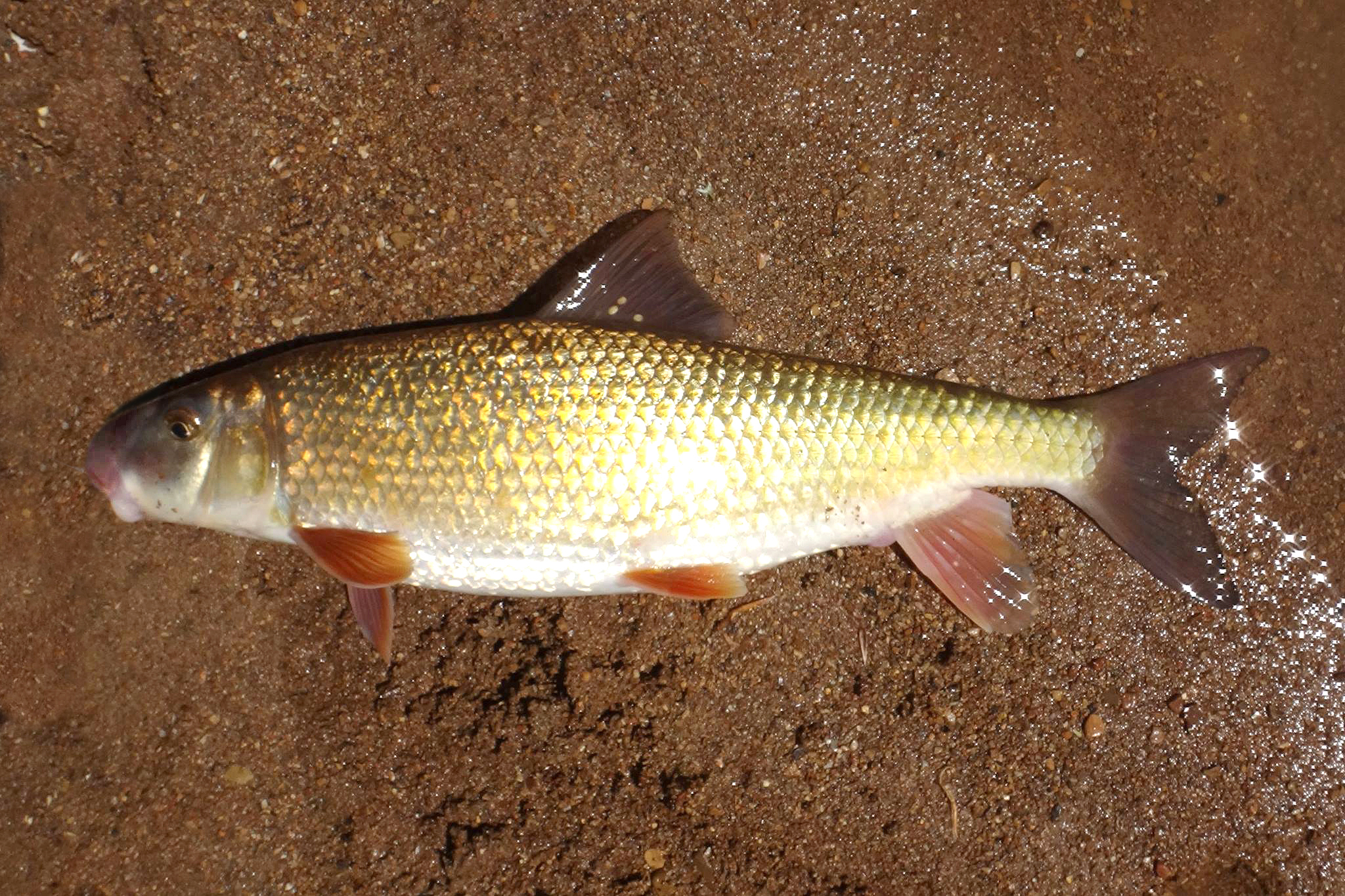While Lance did all the hard work, I hopped in the creek and continued fishing. I spotted a big logperch on the bottom of a pool. Somehow I managed to dive bomb my bait past all the striped shiners and get it in front of him.
Logperch (Percina caprodes)
Lance's girlfriend and I worked our way upstream in search of darter habitat, but all we could find were gravel riffles and deep pools. A few of the pools had redhorse in them, and one in particular must have had fifty or more of them. Most of them were suspended off the bottom, and none of them were feeding.
I walked out on the fallen tree trunk so I could put my bait right in front of one of the fish. However, they just weren't interested. A sunfish rushed over and grabbed my worm. The commotion startled the school of redhorse, and they broke formation and started swimming around. This turned out to be a good thing, because now they took an interest in my bait. Fish on!
My first catch turned out to be my lifer black redhorse, but I didn't realize it at the time! I bet if I had caught a golden first and then the black, I would have realized it right away. The good news is that I took a photo; the bad news is that I didn't bother to check if it was any good. My hand and camera cast a shadow across its face, and the focus wasn't great. It's still an exciting catch though!
Black Redhorse (Moxostoma duquesni) - new hook & line species #326
After the one black redhorse, the next seven or eight fish I caught were goldens. The difference in scale size, shape, and color was obvious. The males were covered in tubercles, which means they were getting ready to spawn!
Golden Redhorse (Moxostoma erythrurum)
Look at that horny boy!
Lance finished his work, so we packed up and drove over to the western part of the state to look for fringed darters. They have an even smaller range than stripetails and spottails, but we had good data, so we felt confident we could find them. We stopped at a tributary of Mill Creek and saw the large slab rocks right away. It took us longer to catch bait than it did to catch our first darters.
Fringed Darter (Etheostoma crossopterum)
Until recently it was thought that this population was E. squamiceps. The mistake was realized when someone took a closer look at breeding males. The tips of the rays on the second dorsal fin are black, which is a characteristic of E. crossopterum.
We didn't have much daylight left, so Lance took his photos quickly so we could head down to our campsite next to Horseshoe Lake. I've camped at this lake several times over the past few years, and it's a spot I'm always happy to return to.
We had hoped to see gar and bowfin below the spillway at the southern end of the lake, but instead we found millions of juvenile Asian carp. I'm guessing they were silvers, but they also could have been bigheads. They were packed in so tightly that some of the ones at the top were being pushed out of the water. It was a crazy sight.
Asian Carp (Hypophthalmichthys sp.)
On the way to our campsite we stopped at a fishing spot that's usually good for a variety of species. I threw a small chartreuse jig and caught a good number of black and white crappie and one freshwater drum. We saw schools of juvenile Asian carp here as well, and the crappie were definitely feeding on them.
Black Crappie (Pomoxis nigromaculatus)
We set up our tents by the lake and enjoyed a fantastic homecooked dumpling stew cooked by Lance and his girlfriend. I went to sleep well fed and feeling accomplished that we had found all three of our targets in one day!












No comments:
Post a Comment
Note: Only a member of this blog may post a comment.